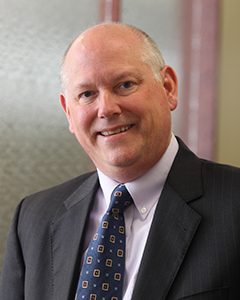New Self-Certification Rules for Hardship Distributions Should Be Embraced

The U.S. Department of the Treasury and the Internal Revenue Service (IRS) recently published final regulations modifying the hardship distribution rules for profit sharing, 401(k), 403(b), and eligible governmental 457(b) plans. And as you might guess, plan sponsors and participants alike need to know what these changes involve.
The new regulations expand and streamline the use of hardship distributions for changes made in legislative acts over the last several years – including the Pension Protection Act of 2006; the Heroes Earnings Assistance and Relief Tax Act of 2008; the Tax Cuts and Jobs Act of 2017; and the Bipartisan Budget Act of 2018.
Previously, 401(k) hardship distribution regulations allowed a distribution if the plan participant could demonstrate “an immediate and heavy financial need”; if the plan included reasonable and objective standards for determining the existence of that financial need; and limited the distribution to the amount required to address that need (along with related taxes and penalties).
An administrator of a 401(k) or 403(b) plan can judge for themselves whether those conditions are met before agreeing to the distribution, or they can implement certain tests that the IRS has established, known as “safe harbors.”
It should be noted that not all plans offer hardship distributions. But for those that do, there are now new rules, some of which are optional and others which are required.
On the optional side, employers now have the option to eliminate the requirement that participants take a plan loan before qualifying for a hardship distribution. However, to qualify for a hardship distribution, participants must still take all available distributions from all of their employer’s tax-qualified and non-qualified deferred compensation plans to address the participant’s immediate and heavy financial need.
In addition, the new regulations expand the existing list of pre-approved expenses that are deemed to be an immediate and heavy financial need. Those now include adding a participant’s primary beneficiary under the plan as a person for whom medical, tuition and burial expenses can be incurred; an expansion of rules pertaining to hardship incurred by a principal residence repair or loss, which previously limited such distributions if that residence was located in a federally declared disaster zone; and the expansion of what constitutes acceptable financial need expenses incurred due to federally declared disasters.
Changes that are required under the new rules include the elimination of an employer’s six-month suspension of employee elective deferrals following that employee’s hardship distribution and the requirement of participants to certify in writing or by other electronic means that they do not have sufficient cash or liquid assets reasonably available to address the hardship.
Prior to making a hardship distribution, the recipient must agree to preserve source documents and to make them available at any time, upon request, to the employer or administrator. In turn, the plan sponsor is required to provide the source documents upon request by the plan’s independent auditor, or by an IRS agent if the plan is under IRS examination. Failure to substantiate the validity of a hardship distribution upon IRS examination may be considered a qualification failure and subject the plan sponsor to sanctions or jeopardize the qualified status of the plan.
We fully support the new self-certification aspect of the revised rules, and will be working to implement the changes that are required for recordkeeping and third-party administrator (TPA) firms. Please note, however, that in order to implement those changes, certain processes, procedures and controls need to change.
Paperwork and sign-off statements need modification. Programming changes also need to be made, not to mention communications with clients and then participants.
And lastly, updates to a plan’s Summary Plan Description (SPD) and Summary of Material Modifications (SMM) will be needed to be provided by the plan administrator.
An SPD is a document that employers must give free to employees who participate in Employee Retirement Income Security Act (ERISA)-covered retirement plans or health benefit plans; it is designed to detail what benefits the plan offers and how the plan works. An SMM explains changes and amendments to an SPD.
Tightening up the self-certification aspect of hardship distributions should take a considerable amount of guesswork out of the picture for plan administrators, some of whom in the past may not have followed the self-certification guidelines as stringently as they should have. Now plan sponsors must be careful to ensure the self-certification information is complete.
It is also advisable that as a best practice, once a self-certification is made, the plan sponsor should require the participant to transmit the source documents as quickly as possible. Timely action will go far in eliminating the need to obtain that documentation from the participant down the road, which could be several years after the hardship distribution took place.
About the Author
